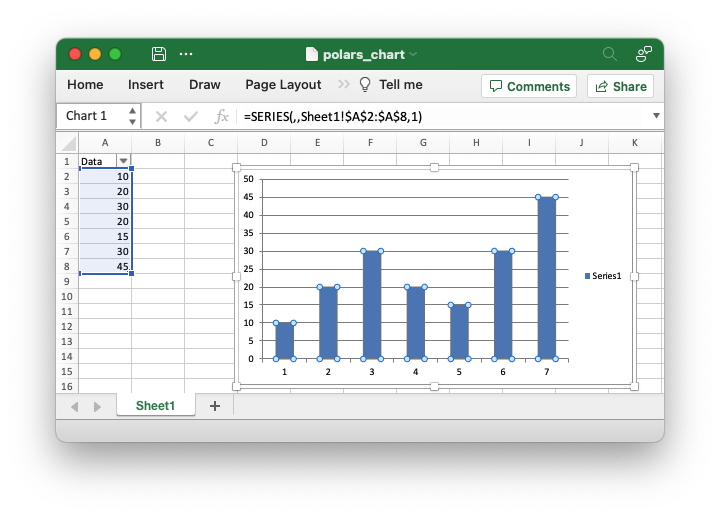Example: Polars Excel output with a chart#
An example of adding a Polars dataframe to a worksheet created by XlsxWriter and then adding a chart of the data. See Working with Polars and XlsxWriter for more details.

##############################################################################
#
# An example of adding a Polars dataframe to a worksheet created by XlsxWriter
# and then adding a chart of the data.
#
# SPDX-License-Identifier: BSD-2-Clause
# Copyright 2013-2024, John McNamara, jmcnamara@cpan.org
#
import xlsxwriter
import polars as pl
df = pl.DataFrame({"Data": [10, 20, 30, 20, 15, 30, 45]})
with xlsxwriter.Workbook("polars_chart.xlsx") as workbook:
# Create the worksheet so we can reuse it later.
worksheet = workbook.add_worksheet()
# Write the Polars data to the worksheet created above.
df.write_excel(workbook=workbook, worksheet="Sheet1")
# Create a chart object.
chart = workbook.add_chart({"type": "column"})
# Get the dimensions of the dataframe.
(max_row, max_col) = df.shape
# Configure the series of the chart from the dataframe data.
chart.add_series({"values": ["Sheet1", 1, max_col - 1, max_row, max_col - 1]})
# Insert the chart into the worksheet.
worksheet.insert_chart(1, 3, chart)